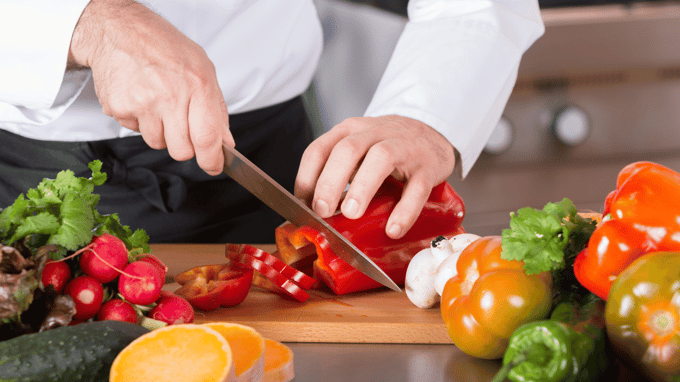
In fast-paced commercial kitchens, batch cooking is a pivotal strategy to amplify efficiency and meal diversity while helping with effective meal prep and significant labor savings. By recognizing pain points and optimizing commercial batch cooking techniques, foodservice businesses can swiftly prepare larger quantities of food without sacrificing quality, streamlining operations, and enhancing productivity.
Unraveling the Pain Points of Traditional Cooking
In traditional commercial cooking, several pain points can significantly hinder efficiency and productivity. Addressing these challenges is crucial for optimizing operations.
The first is the efficiency of the commercial foodservice equipment being used. Up-to-date, well-running appliances such as ovens, grills, and ranges are necessary to deliver diverse menu items. Similarly, having the best refrigeration helps store perishable items at optimal temperatures and keep them out of the food danger zone.
Next is optimizing space and flow. An efficient flow includes specific zones for washing, storage, preparation, cooking, and service, which enhances operational efficiency and staff safety. Also, having organized storage spaces can help staff work quickly. Utilizing vertical space can also help when there's not enough room otherwise.
And last, but certainly not least, is maintenance and upkeep. Ensuring appliances are in top condition is essential. By having routine checks and troubleshooting for common issues, operators can help minimize downtime, which impacts profitability.
A Choreography of Culinary Efficiency
One commonality that restaurants are seeing is dealing with labor issues. And while the labor situation has improved from where it was a few years ago, finding experienced help is still challenging in many instances. A simple way to help is to implement batch cooking into the mix.
Batch cooking allows kitchen staff to get ahead of the game or prepare seasonal items before they spoil. It especially comes in handy when popular food holidays, such as Mother's Day or Thanksgiving, are approaching or for weddings.
Commercial kitchens can prepare for successful batch cooking by taking the following steps:
The kitchen layout should minimize the distance between workstations and appliances, incorporating elements like the triangle layout for the sink, stove, and fridge to enhance movement efficiency.
-
- Implement Movable Workstations
Strategically placed to support quick access to the sink, fridge, or stove, movable workstations facilitate smoother preparation and cooking processes.
Implementing the FIFO (first in, first out) method minimizes food spoilage and waste, while daily or weekly inventory checks ensure ingredients are well-stocked and fresh.
Select recipes that scale well, such as bulk dishes like lasagnas or casserole-style meals, which are perfect for batch cooking and can be efficiently chilled or frozen.
Utilize make-ahead tips for cold appetizers, sauces, and desserts, maximizing oven usage and setting up an efficient workspace to streamline the cooking process during peak hours.
And, of course, the step that will help keep ingredients safe and minimize food waste is using Thermo-Kool blast chillers. By reducing the core temperature of cooked foods from 165 degrees Fahrenheit to 37 degrees Fahrenheit within two hours, blast chillers not only help with batch cooking but also expand menu options, produce higher produce yields, and integrate into HACCP plans. And with Thermo-Kool's overnight function and 'set it and forget it' capabilities, staff can focus on other tasks while still working towards food prep.
The Science of Multiplying Servings Efficiently
In commercial batch cooking, the precision in increasing servings efficiently hinges on several key strategies.
The first thing that commercial kitchens need to do is to standardize all of their recipes and measurements. This helps ensure that each batch maintains consistent quality and quantity. Next, chefs must determine a conversion factor that will appropriately adjust recipes. Use this factor to multiply by the original recipe ingredients to cater to larger or smaller groups without compromising the dish's integrity. Also, consider using portion control tools like scales and measuring spoons instead of eyeballing portions.
By integrating these methods, kitchens can scale their operations effectively, ensuring that increased production does not sacrifice the quality or consistency of the culinary offerings.
Elevating Batch Cooking with Precision
Thermo-Kool blast chillers play a critical role during labor shortages by boosting productivity. Blast chillers work well in any foodservice business by allowing kitchens to meet customer demands while maintaining optimal cash flow, from catering to fine dining establishments to schools.
With precision controls, Thermo-Kool blast chillers ensure that operators of all skill levels can achieve and maintain high food quality standards. This precision produces consistent results every time, which is essential for customer satisfaction and repeat business.
Thermo-Kool offers a range of blast chillers suitable for different business sizes, from compact, self-contained units for small setups to larger roll-in models for the busiest businesses, ensuring that every commercial kitchen can find the blast chilling solution it needs.
Find the right blast chiller for your foodservice business with our online product selector:
